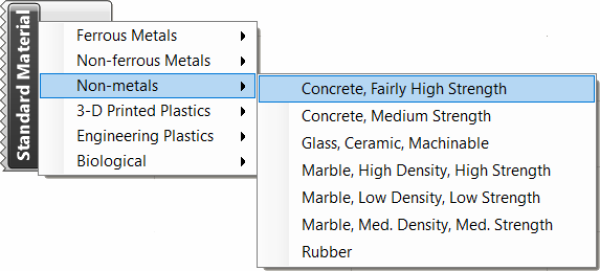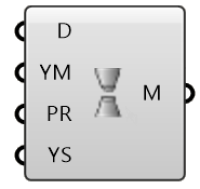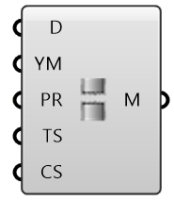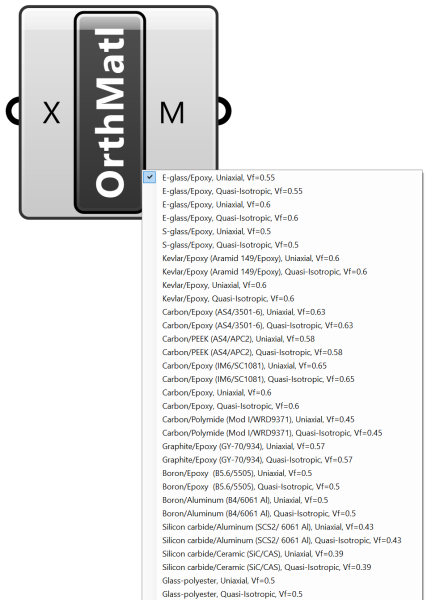Table of Contents
Supported Materials
Intact.Simulation for Grasshopper supports linear isotropic structural materials or orthotropic structural materials.
Structural Material Blocks
Intact.Simulation for Grasshopper contains 5 types of structural Material Blocks:
Built-in Materials
Intact.Simulation for Grasshopper contains a variety of built-in engineering materials which can be picked from the Material Block. These materials are linear isotropic materials. Isotropic materials possess the same mechanical properties regardless of orientation. Linear materials have a proportional relationship between stress and strain. Metals, plastics, and ceramics are examples of linear isotropic materials. If you are running a thermal simulation, you need to use a thermal material block.
Right-clicking on the material block will pop up a list from which one of the built-in materials may be selected.
Custom Ductile Material
The custom ductile material block allows use of structural materials for which the von Mises failure criterion applies. Material properties are based on the selected unit system (the default is the MKS unit system).
The inputs to the custom ductile block are:
- Density
- Elastic modulus
- Poisson ratio
- Yield strength
Custom Brittle Material
The custom brittle material block allows use of structural materials for which the Coulomb-Mohr failure criterion applies. Material properties are based on the selected unit system (the default is the MKS unit system).
The inputs to the custom brittle block are:
- Density
- Young's modulus
- Poisson ratio
- Tensile strength
- Compressive strength
Failure Criteria
Intact.Simulation for Grasshopper supports the following failure criteria:
- Von Mises - used for ductile materials.
- Coulomb Mohr - used for brittle materials.
Intact.Simulation computes the Danger Level in the visualization module based on the Yield Strength, Tensile Strength, and Compressive Strength specified in the material database. The Von-Mises stress failure criteria is only applicable to ductile materials - materials that flex, stretch, or compress significantly before failure. The Coulomb-Mohr failure criteria, on the other hand, is only applicable to brittle materials such as glass, ceramics, and concrete - materials that fail without significant deformation. Note, these failure criteria are automatically applied corresponding to the custom material module chosen.
Built-in Orthotropic Materials
Intact.Simulation for Grasshopper contains a variety of built-in orthotropic engineering materials which can be picked from the Orthotropic Material Block. Orthotropic materials are often used to represent composites and wood, where the material properties along one axis are significantly different from the properties along the other axes.
Right-clicking on the block will pop up a list from which one of the built-in materials may be selected.
Orthotropic materials support an optional transform input, to arbitrarily rotate the axes along which the material properties are defined. Specifying a transform can be useful to simulate a composite where the fibers of the composite are oriented at varying angles relative to the global XYZ coordinate axes. The input is an affine Grasshopper Transform; the orthotropic material block will decompose the transform and apply only the rotation to the material property orientation.
For more details on transformations and an example of obtaining/using transformation inputs see: Beginner Example 4: Planar Orthotropic Materials: Transformation Workflow
Also, see here for an example that demonstrates a simulation using an orthotropic material: Beginner Example 5: Static Simulation of a Composite Motor Mount
Custom Orthotropic Materials
Custom orthotropic materials can be created by using the custom orthotropic material block, which requires the material density, the elastic moduli in the x, y and z directions, the shear moduli in the xy, xz, and yz planes, and the Poisson ratio in the xy, xz, and yz planes. Similar to standard orthotropic materials, custom orthotropic materials support an optional transform input, to arbitrarily rotate the axes along which the material properties are defined.









